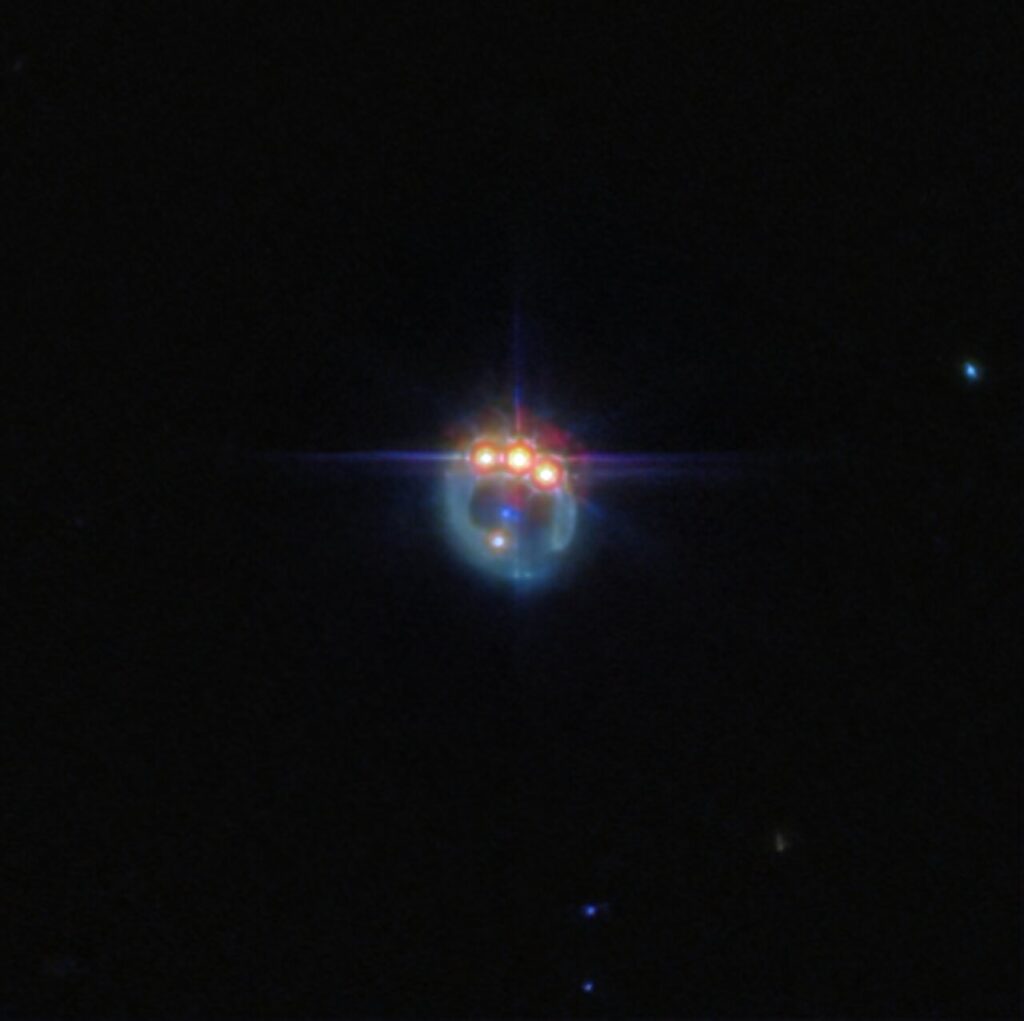The James Webb Space Telescope was able to photograph the amazing quasar RX J1131-1231 in space, the image of which is distorted by the effect of gravitational lensing. As a result it looks like a precious ring with diamonds.

A space ring
This new image from the NASA/ESA/CSA James Webb Space Telescope shows the gravitational lensing of a quasar known as RX J1131-1231, located about six billion light-years from Earth in the Crater constellation. It looks like a precious ring
It is considered to be one of the best lensed quasars discovered to date, as the galaxy in the foreground smears the image of the background source into a bright arc and creates four images of the object.
Gravitational lensing, first envisioned by Einstein, offers a rare opportunity to study regions close to a black hole in distant quasars by acting like a natural telescope and magnifying the light from these sources. All matter in the Universe curves the space around it, with larger masses producing a stronger effect.
Around very massive objects, such as galaxies, light passing close by follows this curved space, deviating from its original path by a clearly observable amount. One of the effects of gravitational lensing is that it can magnify distant astronomical objects, allowing astronomers to study objects that would otherwise be too faint or distant.
Observing black holes in quasars
Measuring the X-ray emission of quasars can provide insight into how fast the central black hole is spinning, and this gives researchers important clues about how black holes grow over time.
For example, if a black hole grows mainly due to collisions and mergers between galaxies, it should accumulate material in a stable disk, and the constant supply of new material from the disk should lead to a rapid rotation of the black hole. On the other hand, if a black hole grew through many small accretion episodes, it would accumulate material from random directions.
Observations have shown that the black hole in this quasar is rotating at more than half the speed of light, indicating that this black hole grew through merger rather than by pulling in material from different directions.
The image above was obtained with the MIRI instrument (Mid-Infrared Instrument) installed on the James Webb Space Telescope as part of the Dark Matter Observations Program. The telescope’s observations of quasars allow astronomers to probe the nature of dark matter on a smaller scale than ever before.
Based on materials: phys.org

